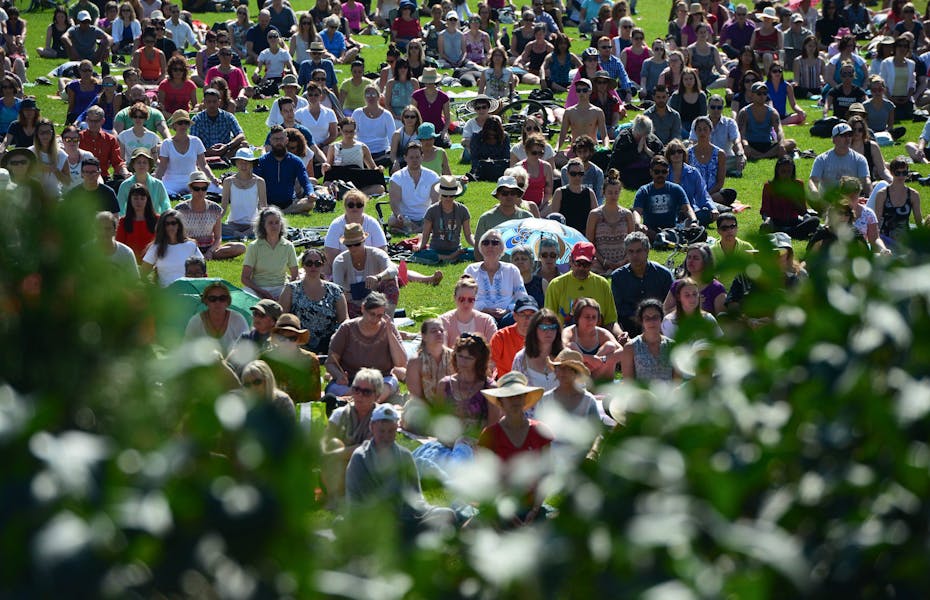
These times of uncertainty, anxiety and overwhelming information, mean that many of us are seeking to find a sense of calmness. On top of that, the global upheavals of a virulent pandemic, a very real climate crisis, the instability of economic and political powers and the emergence of anti-racist and anti-violent movements like Black Lives Matter are all issues that call to people to engage responsively with our world.
A mindfulness practice — the simple act of pausing, taking a breath and becoming aware of our mind, body and heart — may offer some respite as well as a way to support one’s desire for action.
As a yoga teacher, mindfulness practitioner, former high-school teacher and now scholar, I have seen the benefit of mindfulness personally and professionally. My practice has taught me how to respond to strong emotions, bad behaviours and forceful words.
I have also witnessed how leading mindfulness practices in a community of mostly white education students can create greater space for social justice issues, like racism, classism and sexism. A growing body of scientific research supports my observations indicating that when one learns to examine long-held opinions and cultural assumptions towards the self and others, one can free the mind to unlearn and to re-learn, to story and to re-story, to revise and to recognize.
This takes time, effort and commitment.
Teacher education
Despite anti-racist policies and mandates in teacher education, access, equity and equitable representation remain ongoing challenges.
We know that white, middle-class, able-bodied, heteronormative students populate the majority in faculties of education across Canada. For some of these teacher candidates, gaining insight into the lives of “other people’s children,” as education scholar Lisa Delpit puts it, can support multiple ways of reaching out to the diversity of students.
For new teachers, heading into increasingly racialized and gender-diverse classrooms, mindfulness practices can help navigate feelings of discomfort and defensiveness when learning about racial inequality and injustice. They can also help provide important touchstones about best teaching practices.
Research highlights the importance of a teacher’s social and emotional competence in the classroom. Helping teachers become aware of their emotions, social relations and behaviour is the key to establishing positive relationships with students and colleagues.
By disrupting notions of assumptions, biases and prejudice, teacher candidates can become more aware of existing inequalities in their communities as well as the whiteness of textbooks, novels and multimedia materials used as reference points and resources in class contents.
Let’s talk about race
Ibram X.Kendi, author of How To Be An Antiracist says North Americans avoid talking about race, and treat it like a taboo subject. In fact, he says, we need to talk more about race, especially race as a social construct. Others echo Kendi: Canadian journalist Desmond Cole challenges people to shake up their complacency in his recent book on race, The Skin We’re In.
Rhonda Magee, law professor and author of The Inner Work of Racial Justice, says that educators can help students talk about race by leading them through reflection in mindfulness practices. By doing so, educators can delve into the inner work of racial justice.
Magee’s writing has influenced my own work: I consider how to bring secular mindfulness practices to teacher education to engage in talks about racial justice. And, like many others, I believe mindfulness has the potential to provide educators with the skills to deal with unsettling experiences.
Being resilient
At my university, a secular mindfulness program called Stress Management and Resiliency Techniques supports the health and wellness of teacher candidates, helping them to be resilient to challenges and being willing to adapt to new contexts.
I use some of the techniques of secular mindfulness in that resilience program to teach ways to develop inner calm and resilience in my courses about education and diversity. The method is actually fairly simple to follow: Before we begin discussions about race, class and gender, we settle into silence and bring awareness to our thoughts, emotions and sensations. We recognize the flow or maybe the choppiness of breath or tightness of movement. We observe the muttering in our minds and the waves of our emotions. We make every effort to not react but to simply observe in a non-judgmental, patient and kind manner.
The idea is to pause, take a breath and reflect on what we’ve learned, read, heard or experienced. And, maybe by doing this, we can find the grace, courage and strength to recognize quietly and peacefully our own conscious and unconscious biases and assumptions about race, class and gender.
This quiet revolution of the mind — most recently sparked on campus by the 2015 release of the Truth and Reconciliation Commission (TRC) and the 2020 recognition of the Black Lives Matter movement — has been building momentum. Journeying on this path, I believe that secular mindfulness practices can support the inner work of equity, diversity and inclusion by teaching us how to be better, and in Kendi’s words how to be an antiracist.
![]()
Karen Ragoonaden, Professor of education, University of British Columbia
This article is republished from The Conversation under a Creative Commons license. Read the original article.










